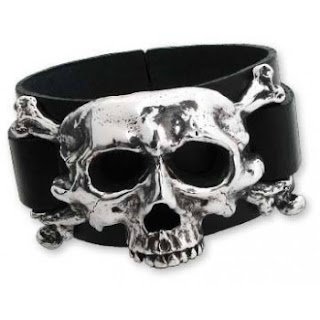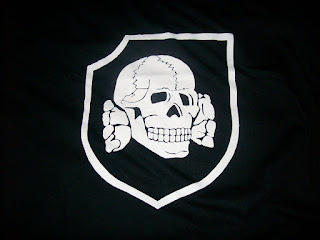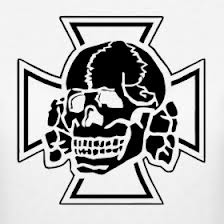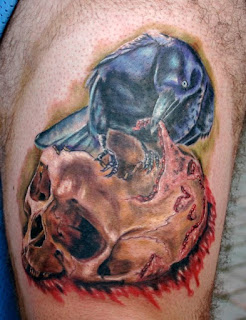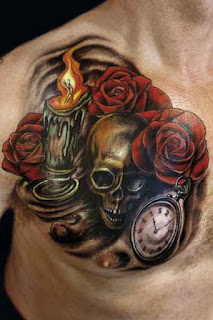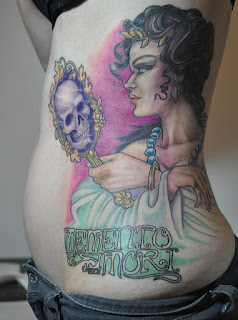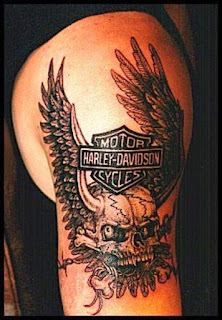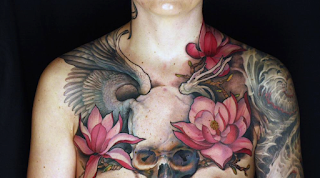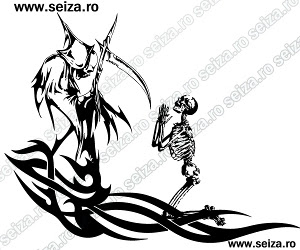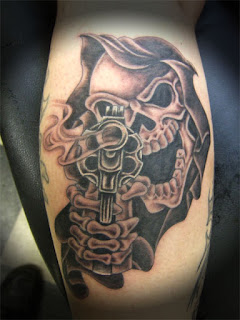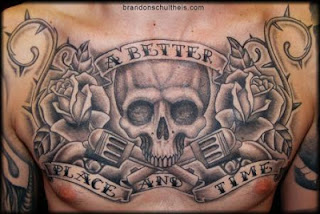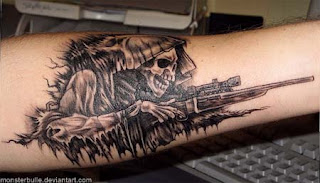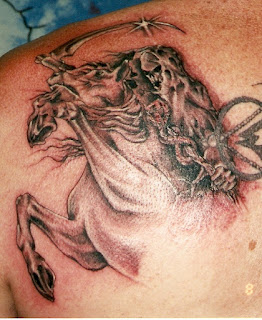Many grim reaper tattoos are created using only black ink and intricate shading to make various shades of grey; however, monotone tattoos are not for everyone. On the other hand, if you decide for a coloured tattoo, you should inform yourself about tattoo colours and tattoo inks, because there is no such thing as "universally-good-tattoo-colours"; in fact, when you decide for a certain colour for your tattoo, in the first place you have to consider your skin tone. Besides that, remember that some tattoo colours are difficult to maintain and they have the tendency to fade faster than others (in this post you might find out some useful information about this subject). Anyway, if you like coloured tattoos and you really want to incorporate some vibrant colours into your Grim Reaper tattoo, here are some suggestions that might help you:
- Blue and cyan are probably the most common colours used in the Grim Reaper tattoos, excepting, of course, black and grey. You can use blue and cyan to fill with color the schyte's / sword's blade, the night sky, the clouds and the moon, the mist (if the Grim Reaper appears surrounded by mist) and even the Death's robe.
- Brown: one could hardly find another colour that suits a Death tattoo. Because brown is the colour of the wood, there are lots of elements which can be filled with this colour: crosses, coffins, dead trees, old books and papyri, etc. Anyway, a brown tattoo isn't appropriate for any type of skin, so you'd better ask the tattooer before choose the brown colour for your tattoo.
- Red: a powerful and violent colour, red is the colour of fire and blood, so it is associated with war and violent death, danger, strength, power, anger, etc. There are many elements which can be coloured in red in a Grim Reaper tattoo: the Death's eyes; the flowers (the red roses, as a symbol of the ephemeral are very common in Death tattoos); the Grim Reaper's robe; the drops of blood dripping down the Death's scythe.
- Green (especially the so-called "poison green" or the pale-green): when Death is depicted as one of the Four Horsemen of the Apocalypse (as mentioned in the Christian Bible) Death is riding a pale-green horse
- Purple: This color is commonly associated with royalty. Death is sometimes portrayed as the King of the Underworld, so you can use this color for the Death's robe.
- Silver: the blade of the Death's scythe (or the blade of the sword, if the Death is depicted as the Angel of Death).
- Yellow and orange: these two colours are not so popular in the Death tattoos. Anyway, there are some elements which can be filled with orange and yellow: thunders, flames (the Flames of Hell); sometimes Death is riding a fire-horse; the fire in the Reaper’s eyes; the Moon; the light of the Death's lantern.
Related posts:
Various elements which can occur in a Death tattoo: skulls and skeletons (1)
Skulls and skeletons tattoos (2)
Death tattoo - various elements which can occur in a Death tattoo
Death tattoos: the main depictions of the Grim Reaper
Death Tattoos / Grim Reaper Tattoos: themes and meanings
Death tattoo - various elements which can occur in a Death tattoo - animals

